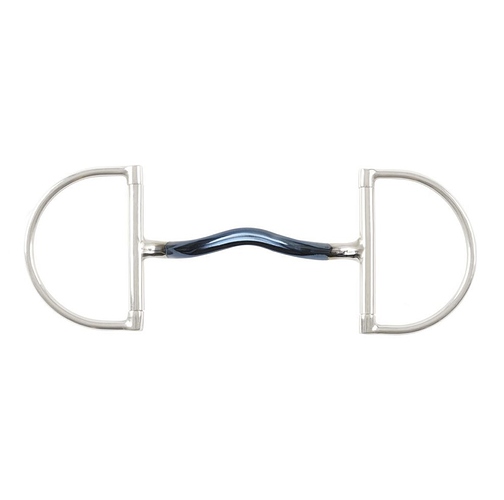I have found with horses who fuss, fuss, fuss with the bit is that these horses were NEVER allowed to develop a proper relationship with the bit.
I ride lesson horses, often elderly lesson horses, who are often totally into fussing with the mouth, ducking back behind contact, inverting, and otherwise showing their displeasure.
With one horse I was in despair and I hit my equitation books. One day I read something about having a straight line from the rider’s elbow to the bit, not only vertically but from side to side. So I concentrated on having a straight line from my elbow without bringing my hands together over the withers as well as the straight line from the side.
It took each horse as long as it took each horse, they are all individuals. But after a while, during my one 30 minute lesson a week, the horses relaxed, started to poke their nose forward in front of vertical, and obeying my rein aids. One day I was looking at my hands and realized when I had a straight line from my elbow to the bit when I looked down at my hands that the horses could SEE MY HANDS, and that the horse could not see my hands when they were in the “proper” position of maybe 5" apart, the width of the bit. When the horse can see my hands clearly, my hands are about a 12" to 18" apart and the horse relaxed and reached for the bit.
This drove my riding teacher crazy at first, at least until she saw the horses I ride relax, breathe out, reach out for the bit, and carry the bit on contact without fussing.
Yes, this is not an ideal hand position for winning equitation classes. However if the horse will not accept the bit when the rider’s hands are in the winning equitation position, the first challenge that must be met is getting the horse to reach out for the bit calmly. Only after calm contact is established can a rider worry about a hand position that would win in an equitation class.
I have Multiple Sclerosis. My hands have a tremor, my hands often wander to the side, my coordination is absolutely horrible (I have to concentrate really hard to coordinate my body). But even with all my physical problems the horses relax, reach for the bit in response to my leg aids, and KEEP contact easily and cheerfully so long as they can see my hands out of the corner of their eyes. After a while, however long it takes that individual horse, I can bring my hands together into the “proper” equitation position without the horse objecting. If the horse starts fussing at the bit again then I move my hands out so the horse can see my hands and the horses tend to relax and settle down.
And I also recommend the Fager titanium bits. With my physical difficulties with my hands the best Fager snaffle bit for MY hands are the Bianca–a titanium 3-piece mouthpiece snaffle with a titanium roller on the center link which gives the horse something easy to move with their tongue when the horse starts becoming tense. Nowadays I ride with a double bridle with the Fager Victoria Mullen mouth curb bit with the longer shank and the Fager Alicia bridoon which is the bridoon equivalent of the bigger ringed Fager Bianca snaffle bit. I have used this double bridle on horses who were resistant to bits, they relax, they reach for the bits, and they keep contact just fine even when I tie up my bridoon reins and keep contact with just the curb bit.
I LOVE the Fager titanium bits that work with my handicapped hands. There are Fager bits that do NOT work with my handicapped hands, and the horses will tell me so quickly. When that happens I switch back to the Fager Bianca or my double bridle with the Fager titanium bits and all is forgiven.
And when the horse I ride inverts and mimics a giraffe I raise my hands so there is still a straight line from my elbow to the horse’s mouth and pretty quickly in my experience the horse reaches out for the bit, some horses will reach for the bit all the way down to the ground, and as long as I let them do this the horse relaxes, and when his head comes back up the inversion disappears and the horse accepts contact much better, until the next time. At 30 minutes a week it may take me several weeks to “cure” the inversion, but after that the horse rarely tries inversions again when I am riding him. This works a lot better than trying to keep my hands down or trying to pull the horse’s head down.
These elderly, been there done that with beginning riders, lesson horses end up trusting my hands even though I am handicapped and my hands really are not the best all the time, so long as they can SEE my hands.

